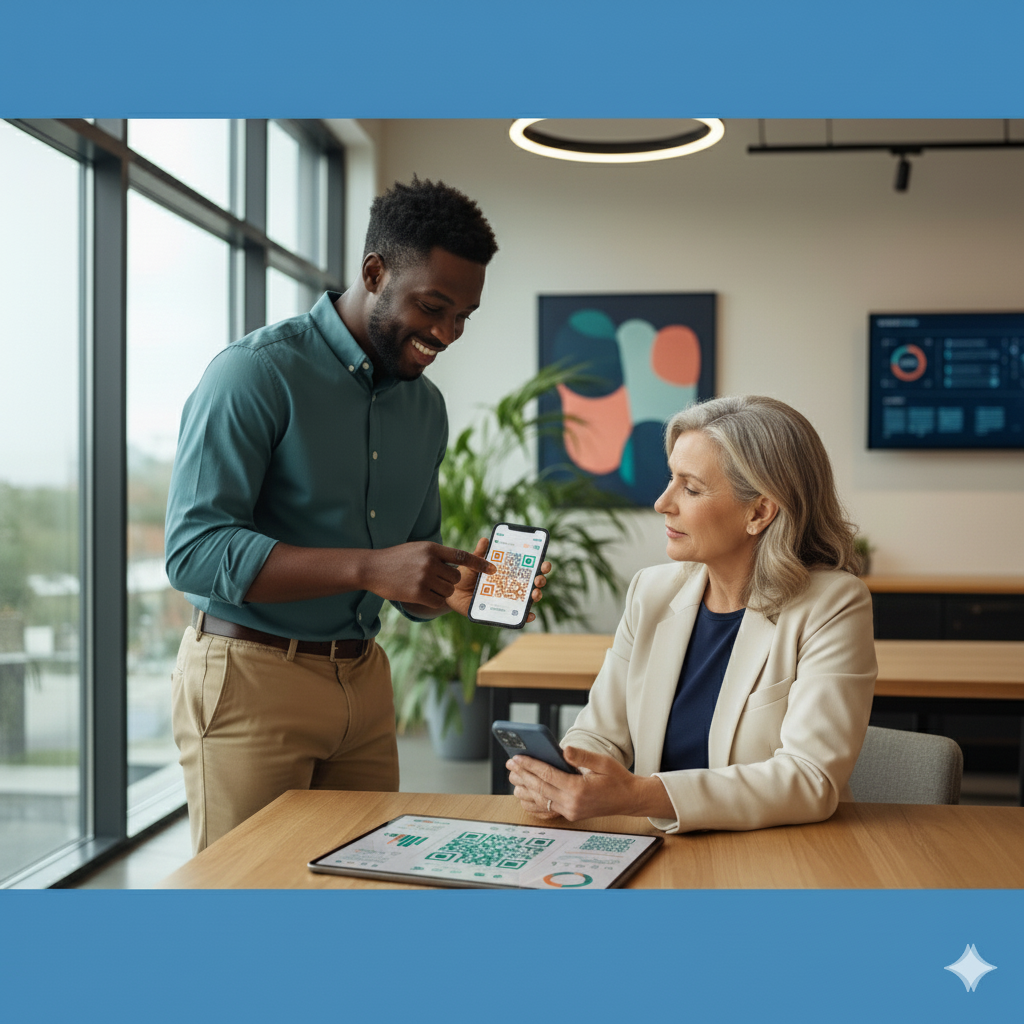Diving Into the Future of QR Codes

Uniqode's State of QR Codes Report 2025 reveals a striking consensus: over 90% of business leaders anticipate increased QR Code adoption across sectors over the next 18 months.
The research shows QR Codes have evolved from a good-to-have gimmick to a must-have resource, reshaping how people interact with products and services in physical and digital spaces. For a closer look at current QR Code adoption insights, explore how businesses today are already scaling QR technology across industries.
But this shift isn't just about generating more scans. It's about creating personalized experiences that feel intentional rather than intrusive. Unlike push notifications that interrupt or banner ads that compete for attention, QR Codes represent something different: an intuitive, high-intent touchpoint where users choose to engage.
The real opportunity isn't simply using QR Codes. It's using them strategically. As businesses race to embed QR Codes into their marketing, the winners will be those who understand how to transform a simple scan into genuine customer value.
This article dissects where QR Code technology is headed, what's driving widespread adoption, and how forward-thinking businesses can turn this understated channel into a competitive advantage.
QR Codes in the next five years
The numbers tell the story of substantial growth ahead. The global QR Codes payment market was valued at $8.07 billion in 2020, and is projected to reach $35.07 billion by 2030.
This growth is fueled by everyday usage patterns. According to the State of QR Codes Report, 59% of customers scan QR Codes daily, and adoption continues accelerating. What started as a way to share static information has evolved into something far more sophisticated: companies now use QR Codes to deliver tailored, interactive experiences that grow customer engagement alongside adoption rates.
Let’s take a quick look at how different industries can use QR Codes right now:
Retail: Scannable shelf tags link to live inventory, customer reviews, or product bundles.

Supply chain: QR Codes offer full traceability from manufacturing to delivery.

Healthcare: From accessing medication instructions to logging into telehealth, QR Codes simplify complex touchpoints.

Banking: Secure payments, fast onboarding, and bill pay are all powered by a scan.
The foundation is now in place. Millions of people know how to scan a QR Code, creating an established channel for instant customer engagement that businesses are only beginning to use fully.
QR Codes are the ultimate CTAs.
Why are brands betting big on QR Codes?
Brands aren't just adding QR Codes to their toolkit but building entire strategies around them. From data collection to sustainability initiatives, QR Codes are solving multiple business challenges at once. Here's why the investment makes sense:
First-party data collection

95% of businesses recognise QR Codes for first-party data collection.
When someone scans your QR Code, they’re not just opening a link but showing you what’s working. You can see when they scanned, where they were, what device they used, and what they did next. It’s real behavior, not assumptions.
That kind of data helps you stop guessing. You can tweak your campaigns, spot patterns, and speak to people in ways that actually stick. It goes beyond tracking to learning what your audience cares about and meeting them there.
Augmented reality experiences

92% of brands believe in increased augmented reality integration
QR Codes aren’t just linking to web pages anymore; they’re opening up real, interactive product experiences. Imagine scanning a QR Code on a furniture tag and instantly seeing how that sofa fits in your living room through your phone or getting a complete 3D walkthrough of a product’s features before adding it to your cart.
QR Codes are also being used to launch interactive instruction manuals. Instead of flipping through a printed booklet, users get step-by-step AR guides that are easier to follow and faster to understand. It’s not just a better experience, it’s a more sustainable way to deliver information.
Sustainable packaging

89% of businesses see QR Codes as an essential aspect of sustainability initiatives.
Instead of cramming every detail onto a box or label, brands now use QR Codes to link customers to online instructions, compliance information, and product updates. That means less paper, less clutter, and fewer reprints when something changes.
QR Codes make packaging cleaner and flexible while still giving customers everything they need on their phones, so it’s a highly considered option. If there’s ever a product update or recall, you can also make changes instantly without throwing out old stock. It’s smarter, faster, and better for the planet.
Advanced personalization
39% of users expect a personalized experience when using QR Codes
We’re entering an era where QR Code content shifts based on when, where, and how it’s scanned:
- Time-based triggers: Information changes depending on the time of day or season. An example is a restaurant menu that updates automatically from breakfast to dinner.
- Location-aware content: Content shifts based on where the user scans. An example is region-specific pricing or local promotions.
- Device-specific UX: The experience is optimized for the user’s device. For example, iOS and Android users see platform-specific interfaces.
This level of contextual responsiveness makes QR Code interactions more relevant, timely, and user-centric, transforming QR Codes from static links into living and responsive assets.
Looking ahead, global QR Code usage is expected to grow significantly in the coming years, and that kind of growth doesn’t happen by chance. And if you’re wondering how BFCM validated the next wave of QR Code adoption, recent data offers clear proof of where shopper engagement is heading. Three major drivers are pushing this wave forward:
- Mobile-first behavior
Smartphones have evolved from communication tools into ways people shop, pay, check in, and look up information in real time. With 96.3% of internet users now accessing the internet via mobile phone, the shift to mobile-first behavior is nearly complete.
QR Codes capitalize on this reality by turning any surface into a quick-access touchpoint that fits naturally into existing mobile habits. Brands that embrace this behavior can convert scans into sales, data, and loyalty without disrupting the user experience.
- Dynamic QR Codes
Static QR Codes lock you into fixed destinations, but dynamic QR Codes offer flexibility. You can update the QR Code’s link without modifying or reprinting the QR Code itself, enabling real-time control, A/B testing, and contextual targeting based on device, location, or campaign source.
QR Code tools also let you update links, adjust content, and track performance without generating new codes. That being said, 96% of brands expect wider adoption of dynamic QR Codes in the next 5 years.
- Seamless omnichannel QR Code experiences
QR Codes can be used by brands to help bridge physical items such as signs, posters, or product packaging to digital information without having to search or type anything.
It removes extra steps and keeps the process quick and straightforward. It also means people can get more details or take action right away, even when they’re outside or in a store. This smooth connection between physical and digital spaces makes things convenient for everyday use.
The QR Code question every marketer must ask
The future of QR Codes goes beyond traditional marketing. They’re now a vital link between physical and digital experiences.
As a marketer, ask yourself: Is your QR Code strategy solving a real user need, or just filling a space?
The brands getting the most value treat QR Codes as a core part of the customer journey, not a temporary trend.
Remember: It’s not just about asking Where this code should lead? It’s about asking What the user needs right now, and how we can meet that need in one scan.
To stay ahead, brands must treat QR Codes as engagement systems, not just campaign tools—building experiences that evolve as fast as customer expectations do.
💡Want to make smarter decisions with QR Codes? Explore Uniqode’s State of QR Codes Report for data-backed insights into how businesses use QR Codes today, and where adoption is heading next.
